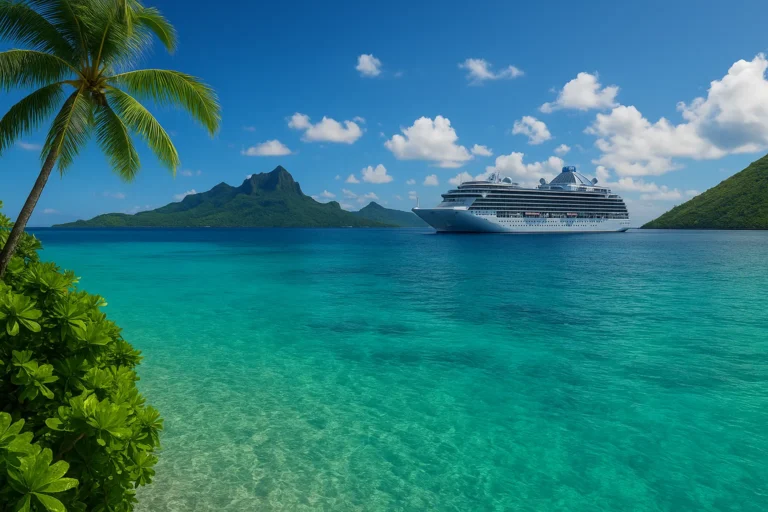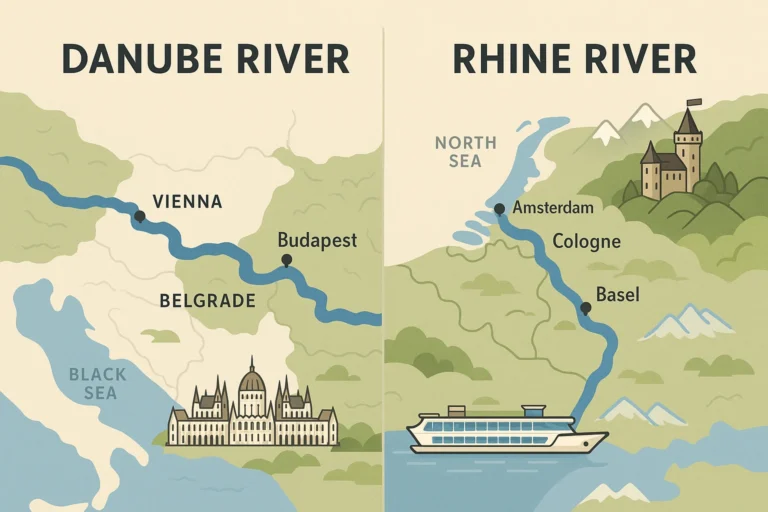Rio de Janeiro Cruise Port Guide: Beaches & Carnival Tips
Rio de Janeiro Cruise Port Guide: Beaches, Carnival & Unforgettable Experiences
Welcome to the “Cidade Maravilhosa” – the Marvellous City! Rio de Janeiro, a metropolis pulsating with energy and natural beauty, is a cruise destination that instantly captivates the hearts of travelers. Famous for its golden beaches, the seductive rhythms of samba, the electrifying atmosphere of Carnival, and iconic landmarks like the Christ the Redeemer statue and Sugarloaf Mountain, Rio offers an authentic and unforgettable Brazilian experience.
Whether your ship docks here for a day or you are fortunate enough to visit during its world-renowned Carnival, this comprehensive guide to the **Rio de Janeiro cruise port** will provide you with all the essential information to make the most of your time in this extraordinary city. From navigating the port and exploring its emblematic beaches to understanding how to immerse yourself in the Carnival spirit and discovering its most impressive attractions, we will prepare you for a memorable Brazilian adventure.
1. Arriving in the Marvellous City: Rio de Janeiro Cruise Port (Pier Mauá)
The arrival point in Rio for most cruise ships is **Pier Mauá**, a revitalized port area that has undergone significant transformation in recent years, becoming a modern gateway to the city.
Location and Facilities:
- Strategic Location: Pier Mauá is conveniently situated in the central area of the city, known as Porto Maravilha (Marvellous Port). This location offers stunning views of Guanabara Bay and the urban landscape, with the famous granite mountains in the background.
- Accessibility: Its proximity to the city center means relatively easy access to public transport (the VLT – Light Rail Transit), taxis, and ride-sharing services, allowing you to start your exploration quickly.
- Modern Terminal: The cruise terminal has been modernized, offering comfortable facilities for passengers, including waiting areas, tourist information desks, and sometimes small shops or cafes. The first impression upon arrival, with the majestic ships docked in front of Rio’s spectacular scenery, is simply unforgettable.
- Security: The port area is well-secured, with dedicated personnel to ensure passenger safety upon arrival and departure.
2. Rio’s Iconic Beaches: Sun, Sand & Carioca Spirit
You cannot visit Rio without immersing yourself in its vibrant beach culture. These are not just places for sunbathing but the very heart of the city’s social life.
Copacabana Beach: Legendary and Lively
- Description: With its distinctive crescent shape and iconic wavy mosaic promenade, Copacabana is arguably the most famous beach in the world. It’s a place where tourists and locals (cariocas) mingle, offering a lively atmosphere 24/7.
- Activities: From sunbathing and swimming to beach volleyball, beach soccer, and *futevôlei* (a mix of soccer and volleyball). There are numerous kiosks serving refreshing drinks, snacks, and, of course, the famous caipirinha.
- Tips: The beach is divided into zones marked by “postos” (lifeguard stations), which serve as landmarks. Be mindful of your belongings, especially in crowded areas.
Ipanema Beach: Chic and Trendy
- Description: Situated next to Copacabana, Ipanema is considered more sophisticated and fashionable. It gained fame from the song “Girl from Ipanema” and attracts a more upscale crowd.
- Activities: Besides sunbathing and swimming, Ipanema is popular for surfing (especially at Arpoador, at the eastern end) and for watching spectacular sunsets from Arpoador rock. It’s also a cultural hub with art and craft vendors.
- Tips: Ipanema has a more relaxed yet equally vibrant atmosphere. Each “posto” on Ipanema attracts a specific crowd, from families to the LGBTQ+ community.
Leblon Beach: Quieter and Family-Friendly
- Description: A natural extension of Ipanema Beach, Leblon is slightly more exclusive and quieter, often preferred by local families.
- Activities: Excellent for sunbathing and swimming, with a special area called “Baixo Baby” (Baby Down), perfect for young children.
3. Experiencing the Spectacle: Rio Carnival for Cruisers
If you are lucky enough to visit Rio during its world-famous Carnival (usually held in February or early March, depending on the Catholic calendar), an unparalleled spectacle awaits you.
The Highlight: The Sambadrome
- Samba School Parade: This is where the most grandiose parade takes place, with Rio’s top samba schools competing with extravagant costumes, impressive allegorical floats, and intoxicating rhythms. It is a monumental event, an explosion of color, sound, and energy.
- Tickets: Tickets for the Sambadrome must be purchased well in advance, as they sell out quickly, and prices can be quite high. There are different sectors (*arquibancadas* – bleachers, *cadeiras* – chairs, *camarotes* – private boxes) with varying prices.
Street Parties (Blocos): The Heart of Carnival
- Authentic Experience: *Blocos* are free street parties, organized by local groups, that parade through the city’s neighborhoods. These represent the true essence of Rio Carnival – a spontaneous and inclusive celebration where anyone can join in, dance, and sing.
- How to Find Them: The *blocos* schedule is announced a few weeks before Carnival. It’s a fantastic way to experience local culture, but be prepared for extreme crowds.
Carnival Balls: Elegance and Glamour
- Exclusive Options: For a more formal and elegant experience, you can attend one of the many Carnival balls. The most famous is the Magic Ball at the Copacabana Palace Hotel, known for its extravagance and celebrity guests.
Tips for Your Carnival Visit:
- Book Early: Everything, from flights and accommodation to Sambadrome tickets, must be booked months (even a year for top hotels) in advance.
- Safety: During Carnival, crowds are enormous. Be extremely vigilant with personal belongings and avoid wearing valuables.
- Transportation: Public transport will be crowded; plan your routes well in advance. Many streets will be closed.
4. Must-See Landmarks & Cultural Gems
Beyond the beaches and Carnival, Rio abounds with iconic landmarks and places worth exploring.
Christ the Redeemer (Cristo Redentor): A World Wonder
- Description: The colossal Art Deco statue of Jesus Christ on top of Corcovado Mountain is a symbol of Brazil and one of the New Seven Wonders of the World. It offers absolutely breathtaking panoramic views of Rio, its beaches, and the bay.
- How to Get There: The most popular way is by cog train (Corcovado Railway) from Cosme Velho. Official vans or taxis/Uber are also options.
- Tips: Go early to avoid crowds and for better light for photos. Check the weather forecast – a clear day is essential for good views.
Sugarloaf Mountain (Pão de Açúcar): Spectacular Vistas
- Description: Another iconic Rio landmark, Sugarloaf Mountain is accessible via a memorable two-stage cable car ride. The first stop is Morro da Urca, followed by a second cable car to the top of Sugarloaf. The views of the city, Copacabana and Ipanema beaches, the bay, and Corcovado are stunning.
- Best Time: Go at sunset to experience Rio in daylight, then watch the city light up. It’s magical.
Selarón Steps (Escadaria Selarón): A Colorful Masterpiece
- Description: A vibrant, mosaic-tiled set of steps created by Chilean artist Jorge Selarón. Each step is a work of art, featuring tiles and mirrors from around the world.
- Location: Situated between the Lapa and Santa Teresa neighborhoods.
- Tips: Can be very crowded, especially midday. Watch your belongings.
Santa Teresa: Bohemian Charm
- Description: A picturesque neighborhood perched on a hill, with cobblestone streets, historic villas, art studios, charming boutiques, and restaurants. It was once the home of Rio’s bohemians.
- How to Get There: You can take the historic “Bondinho” tram from downtown (if operational) or taxis/Uber.
Lapa Arches (Arcos da Lapa): Landmark and Nightlife Hub
- Description: This old Roman-style aqueduct, now part of the tram route to Santa Teresa, is a symbol of old Rio. The Lapa area is also renowned for its lively nightlife, filled with samba and *choro* bars.
Tijuca National Park: Urban Rainforest
- Description: The largest urban rainforest in the world, offering a serene escape from the city bustle. It boasts waterfalls, hiking trails, and viewpoints.
- Tips: For deeper exploration, a guided tour is recommended.
5. Culinary Delights: Savoring Rio’s Flavors
Rio de Janeiro offers a rich culinary scene, reflecting its diverse cultural mix.
Must-Try Dishes:
- Feijoada: A traditional, hearty Brazilian stew made with black beans and pork, usually served on Saturdays.
- Pão de Queijo: Small, delicious cheese bread rolls, perfect for breakfast or a snack.
- Açaí na Tigela: A refreshing bowl of frozen açaí berries, often served with granola and fruit, ideal for a hot day.
- Churrasco: Brazilian barbecue, featuring a variety of meat cuts, often served “rodízio” style (all-you-can-eat) in *churrascarias*.
Local Beverages:
- Caipirinha: Brazil’s national cocktail, made with *cachaça* (sugar cane spirit), lime, sugar, and ice. It’s potent but delicious!
- Fresh Juices: Brazil is renowned for its vast variety of fresh tropical fruit juices.
Dining Experiences:
- Beach Kiosks: Perfect for a refreshing drink or quick snack with an ocean view.
- “Por Quilo” Restaurants: Buffet-style restaurants where you pay by the weight of the food you choose – an excellent and economical option for lunch.
6. Practical Tips for Cruisers: Navigating Rio Safely & Smoothly
To ensure a pleasant and worry-free visit to Rio, here are some essential tips:
Currency and Payments:
- Currency: Brazilian Real (BRL). It’s advisable to have some cash for small purchases, street vendors, or taxis.
- Card Payments: Major credit cards are widely accepted in most shops, restaurants, and hotels.
- ATMs: Widely available, but exercise caution when using them, especially at night.
Transportation from the Port:
- Taxis: Official yellow taxis are available at the cruise terminal. Ensure they use the meter.
- Ride-Sharing Apps: Uber and 99 (a popular local app) are available and can be a good option, especially to avoid language barriers and for transparent pricing.
- VLT (Light Rail Transit): A modern and efficient option connecting the port area to the city center and major metro stations.
Safety and Security:
- Awareness: Like any large city, be vigilant, especially in crowded areas (beaches, tourist attractions, public transport).
- Avoid Displaying Valuables: Don’t flaunt expensive jewelry, cameras, or mobile phones. Keep your valuables safe and discreet.
- Use Reputable Transport: Opt for official taxis or trusted ride-sharing apps.
- Stay in Tourist Areas: Adhere to local advice and avoid neighborhoods considered unsafe.
Weather and Best Time to Visit:
- Summer (December – March): Hot and humid, with high temperatures and occasional rain. This is also Carnival season and peak tourist season, with higher prices and crowds.
- Shoulder Seasons (April – May, September – October): Pleasant weather, more moderate temperatures, and fewer tourists, making it an excellent time to visit.
- Winter (June – August): Cooler and drier, with mild temperatures, ideal for sightseeing without extreme heat.
What to Pack:
- Light, breathable clothing.
- Swimwear and beach accessories.
- Comfortable walking shoes for exploring.
- Sun protection (hat, sunglasses, high SPF lotion).
- Light rain jacket (even in the dry season, tropical showers can occur).
- Power adapter (Brazil uses Type N, with three round pins).
Communication:
- Language: Brazilian Portuguese. English is spoken in major tourist areas, but a few simple phrases in Portuguese will be appreciated.
- Connectivity: Local SIM cards are available at the airport or in shopping malls. Wi-Fi is available in most hotels, cafes, and restaurants.
❓ Frequently Asked Questions (FAQ) About Rio de Janeiro Cruise Port ❓
Q: How far is the Rio cruise port from the main attractions?
A: Pier Mauá is centrally located. Attractions like Sugarloaf Mountain, Christ the Redeemer, and Copacabana/Ipanema beaches are accessible by taxi, ride-sharing, or public transport within 20-40 minutes, depending on traffic.
Q: Can I explore Rio on my own from the cruise port?
A: Yes, it is possible and often recommended to save money and have flexibility. Ensure you have a clear plan, use reliable public transport or ride-sharing, and be aware of your surroundings.
Q: Is it safe to visit Rio de Janeiro as a cruise passenger?
A: Rio is generally safe for tourists, but it is crucial to be vigilant and take precautions. Avoid displaying valuables, do not venture into unfamiliar areas alone, especially at night, and use trustworthy transportation.
📂 Explore More in These Categories
Best Cruise Destinations in 2025: Caribbean, Europe & Bucket List Ports
Q: What’s the best way to get to Christ the Redeemer from the port?
A: The most straightforward way is to take a taxi or Uber to the Corcovado train station. From there, the train will take you directly to the statue. Alternatively, official vans depart from various points in the city.
Q: What must-try food should I taste in Rio?
A: Don’t miss an authentic *feijoada*, *pão de queijo* (cheese bread), a refreshing bowl of *açaí*, and, of course, a fresh *caipirinha*. Brazilian-style grilled meat (*churrasco*) is also a must-try.
Q: Can I visit the Sambadrome if it’s not Carnival?
A: Yes, you can visit the Sambadrome even outside of Carnival season. There’s a small museum and a souvenir area. It’s a good opportunity to see the impressive structure without the event’s massive crowds.
Conclusion: An Authentic and Vibrant Brazilian Cruise Experience
Rio de Janeiro is not just a destination; it’s an experience – a fusion of natural beauty, cultural passion, and contagious energy. From its iconic mountain landscapes to its lively beaches and the unparalleled spectacle of Carnival, Rio promises an unforgettable port call for every cruiser. By utilizing this guide, you’ll be well-equipped to immerse yourself in the city’s vibrant spirit, explore its treasures safely, and create memories that will last a lifetime. Embrace the rhythm of Rio and make the most of your Brazilian adventure!
